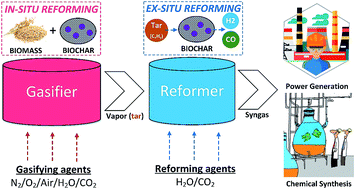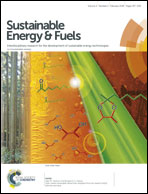Advances in in situ and ex situ tar reforming with biochar catalysts for clean energy production
Abstract
Thermochemical processes such as gasification can decompose carbon feedstocks into gaseous (e.g., syngas), liquid (e.g., oil, tar), and solid (e.g., char) products. Gasification is generally performed in a partial-oxidation environment (e.g., CO2 and steam). In particular, steam gasification has attracted more attention for converting biomass into valuable H2-rich syngas. Biochar is the predominant by-product from biomass pyrolysis or gasification, which has high potential to be used for gas cleaning (e.g., tar removal). This paper reviewed the progress in tar cracking/reforming with biochar catalysts. Biochar can be used as a carbon catalyst or support with fair performance in tar removal. It is noteworthy that biochar catalysts can also be directly gasified to recover energy without the need for frequent regeneration after deactivation. Besides, an integrated strategy of catalytic biomass pyrolysis was proposed to promote the environmentally friendly application of biomass gasification in the future. In general, the high catalytic activity of biochar for tar reforming is attributed to its specific surface properties, amorphous carbon structure with active surface functional groups, and the properties of metal species (e.g., concentration, physicochemical state and dispersion) such as AAEMs in the biochar matrix. Particularly, K-loaded char is significant for tar decomposition in H2O or CO2.



 Please wait while we load your content...
Please wait while we load your content...